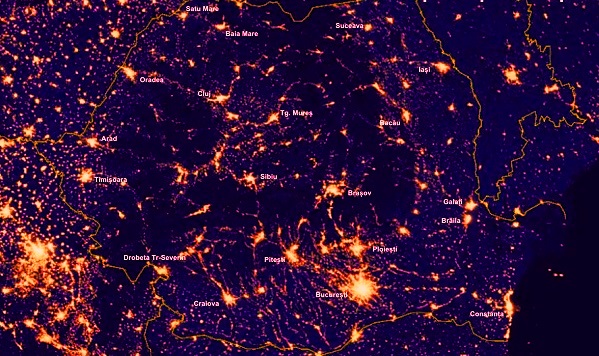 According to data published by Eurostat, the living standard in the Bucharest-Ilfov region was 139% of the EU average in 2016, according to GDP per capita at the purchasing power parity standard (adjusted to the national price level).
According to data published by Eurostat, the living standard in the Bucharest-Ilfov region was 139% of the EU average in 2016, according to GDP per capita at the purchasing power parity standard (adjusted to the national price level).
Bucharest area surpassed, on comparable terms, European metropolitan areas such as Madrid (125%), Berlin (118%), Rome (110%) or Lisbon (102%).
To keep in mind, following a calculation of a price level of only 50.7% of the European average, the 20,500 euro/inhabitant in nominal values were equivalent to 40,400 euro/inhabitant in terms of purchasing power and both thresholds, of 20,000 euro and 40,000 euros have been exceeded for the first time.
The good news is that Romania has now only three development regions in the top of the poorest regions of the EU, compared to five regions two years ago, and the West region has succeeded to reach an older target set at the accession, 60% of the EU average and now we have two regions that meet this criterion, theoretically needed for the adoption of the euro.
Internal disparities between regions are severely widening
The bad news is that the disparities between the country’s richest and poorest areas have further increased, and the gap between the capital city and the rest of the country (not to mention the closer counties) has widened significantly.
Significantly, while Bucharest-Ilfov climbed by no less than ten percentage points in the Eurostat statistics in two years, the South East region is the only one that stagnated, with a zero progress.
Three regions of Romania that fell behind within EU are:
- North-East Region (34% of the EU average and fifth in the European poverty ranking)
- South-West Oltenia (42% and 7th position)
- South-Muntenia (46% and 12-13th position, along with Northern Greece, although it is „at a stone’s throw” from Bucharest)
Of course, others have „their own failures” as well, the second position in the poverty ranking held by a region in France, Mayotte, with a GDP/capita of only 33% of the EU average, should be considered.
Besides, five regions in Bulgaria (out of the seven lowest ranked!), five in Poland (but with somewhat higher levels of relative GDP) and four in Hungary fell behind among the 276 European regions analysed.
Also, it is worth mentioning the growing poverty, which is increasingly obvious in Greece, the country that has replaced us with two regions compared to the situation in 2014, which should be a “wake up” call for us.
If we do not pay attention to the economic policies applied, areas that grow but not in a sustainable manner could go back down.
In fact, the South Region went out of the poverty ranking not because it progressed, but because Greeks have regressed.
It is noteworthy the slight alleviation of the discreet contrast in the eastern half of the country (Second Macro-Region), among the 36% of the North East region (which succeeded to exceed the threshold of 10,000 euros per capita in terms of the purchasing power standard). As well as the quite good advance marked in the northwest of the country, which has exceeded the threshold of 50% of the EU average and has surpassed the region from the opposite side, the southeast region. This is where we see the importance of the infrastructure, even of others, if we have not been able to make a clear progress.
A special attention should also be paid to the exaggerated difference between the Bucharest-Ilfov area and the South-Muntenia Region of which the capital city is part.
It exceeded the 3 to 1 ratio.
Which means that a change from Giurgiu to Bucharest is equivalent to that from Calarasi to Vienna.
*
- Regional GDP in Romania, in 2016
- First macro-region
- North-West
- Centre
- Second macro-region
- North-East
- South-East
- Third macro-region
- South-Muntenia
- Bucharest-Ilfov
- Fourth macro-region
- South-West Oltenia
- West
*
For reference, we mention that the record of living standards is held by the West Inner London Region with 611% of the EU average.
This is followed by Luxembourg (257%), Dublin (217%), Brussels and Hamburg (200% each), Hamburg (200%). 19 regions of the EU have a living standard of 50% above the EU average (of which four in Germany, three in the UK and two in Austria).
Interestingly, even from the historical perspective of the Austro-Hungarian Empire, Bratislava (184%) slightly surpasses Prague (182%) and both have distanced from Vienna (153%). Which does not necessarily represent a good thing but reflects an unbalanced development in the territory, which is also found in our case. Where the development of urban transport networks and the expansion of local services should decongest the capital city.










